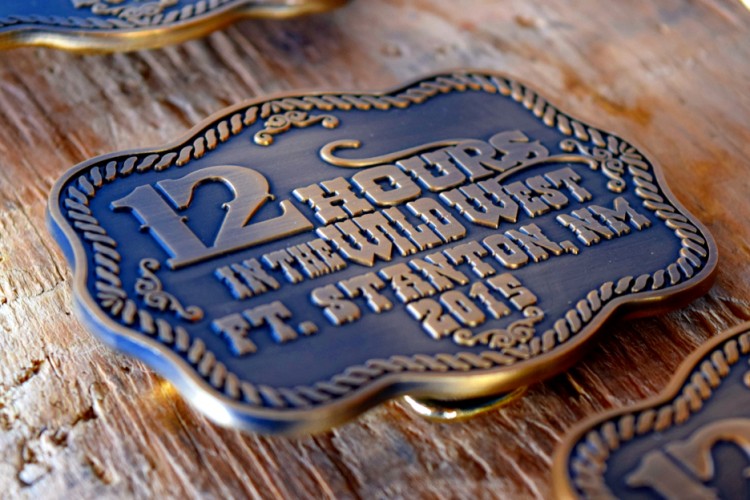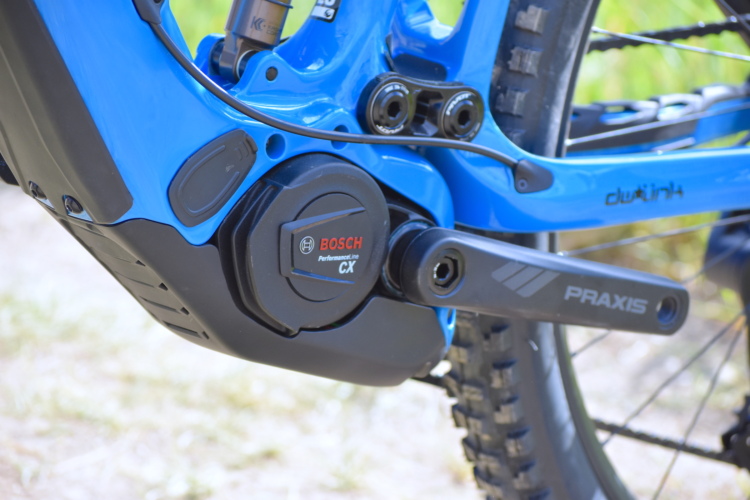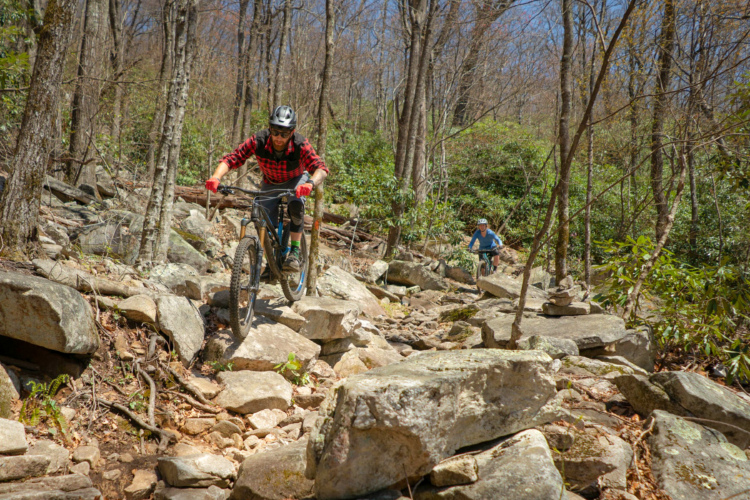
As I pored over topo maps of New Mexico, a large, mysterious mass called Mount Taylor seemed to randomly rise from the surrounding desert. Mount Taylor, at 11,301 feet above sea level, rises 5,000 feet above the nearby town of Grants, and the surrounding wilderness is intersected by the Continental Divide Trail (CDT.) Naturally, this made the spot seem prime for an epic descent.
According to Sherry Robinson’s El Malpais, Mt. Taylor, and the Zuni Mountains: A Hiking Guide and History, Mount Taylor is sacred to the Zuni, Acoma, and Navajo peoples. To the Navajo, it is one of the four sacred peaks that denote both the cardinal directions and the boundaries of their sacred homeland, Dinetah. These peaks are so sacred traditional Navajos carry a sack filled with dirt from each of the sacred peaks (the others being Blanca Peak to the east, the San Francisco Peaks to the west, and Hesperus Peak to the North) and mention all four peaks in every single one of their prayers. This ride would not only give me a chance to experience an epic alpine descent, but it would also provide me a chance to understand other cultures.
The Ride
To plan for this descent, I quickly identified a point to point route down Mount Taylor. My father and I would be dropped off at the Water Canyon Trailhead, which rests at a pass in between Mount Taylor and its little brother, the La Mosca Lookout. By only climbing 700 feet via the Gooseberry Trail, we would be able to quickly summit Mount Taylor to soak in the views. Then, after bombing down the Gooseberry Trail, we would take Forest Service Road 193 to the nearby CDT segment FS 193 to Lobo Canyon and ride that the rest of the way to Grants. All in all, it would take exactly 18 miles, 939 feet of climbing, and 4,751 feet of descending to complete. Expecting a fairly technical trail and fearing the heat could threaten us on the desert portion of the ride, we decided an early start would be best.

We immediately started our 700-foot climb at the pass located between La Mosca Lookout and Mount Taylor. However, since my father and I live at just 660 feet above sea level in Wisconsin, climbing from 10,600 to 11,300 feet above sea level right out of the gate proved to be a massive challenge. Slowly inching up the mountain hike-a-bike style, we continued as the jaw-dropping views that only Mount Taylor’s volcanic background could create unfolded in front of us. Runs through grassy fields slowly transitioned into winding switchbacks through thick forests as the summit approached.
Early local geologists identified Mount Taylor’s northeast face as a sideways crater, meaning they thought the mountain erupted Mount St. Helens style. Although their theory was eventually proven wrong, it’s easy to see how they got that idea. The face drops dramatically, revealing views stretching all the way to the Jemez mountains in the northeast and to the Zunis in the southwest. We mortals are only left to imagine how big the mountain once was, its western side long since gone. It almost seems as if some greater being punished the mountain for its power and strength by handicapping it to its current state.

Achieving the summit only brought more amazing views, this time to the south. We could see the thick forests on the top of the mountains all the way to the blazing hot Sonoran desert thousands of feet below. After getting the customary summit pictures and eating a couple Nature Valley Granola Bars, we smiled as we pointed our steeds downhill for the first time in the trip.
The first phase of the descent, which winds and switches back through the mountain’s enormous “summit meadow,” is undeniably loose. Large chunks of pumice mysteriously left behind from the era of the volcano’s activity dot the trail, making it essential to have the ability to move with the bike to avoid washing out.

Once we took a right turn off the summit, the trail quickly started throwing trials at us. First, we had to ride a couple small drops made difficult by loose, undefined landings. Even though there were a few close calls, we made it through with relative ease.
Next came two of the largest and tightest switchbacks I have ever seen. These switchbacks would bring us off the upper reaches of the mountain and onto one of its many lower ridges.
Throughout this entire time, the view loomed in front of us, threatening to hypnotize us while riding the technical trail. On one break right after the switchbacks, we sat in awe while looking up at the sharp, piercing tower of rock that extended from the ridge above us.

Once we were through the switchbacks, the trail opened up quite a bit. The pumice disappeared from sight, the grade of the mountain eased, and the trail straightened out. The character of the trail morphed from loose and slow to buff and fast. We couldn’t have been happier about this shifting of gears! Within no time, we were barreling down the mountain at light speed. The breeze gently kissed the grass, just like our tires kissed the dirt beneath them, and the mountain seemed to be one with the sky just as our bodies were with our bikes.
As we blazed further and further down the mountain, little did we realize the trees were starting to encroach upon our summit meadow. We only acknowledged the transition once we were confronted with a stand of trees that included some of the biggest aspens I’d seen in my entire life. The flow here was eerily similar to the Rainbow Trail portion of the Monarch Crest, except in place of the Rainbow Trail’s short, steep climbs, entertaining rock gardens lay in our path.
We continued as the high mountain aspens slowly gave way to a more arid pine forest, leaving us with a lot of exposed rock and some more technically challenging, extended rock gardens. After navigating the last bit of the Gooseberry Trail, sometimes riding with the elegance of a ballerina and other times with the reckless abandon of a pinball going through a pinball machine, we finally made it to the forest service road.

Riding on the road just gave us more time to enjoy our surroundings. I couldn’t help indulging in the calls of the birds, in the sway of the trees, and even in The Smell. The Smell is the fragrance of Ponderosa Pine, which I’ll always associate with The West.
Once we made it to the CDT, I came out of my daze, ready for action. When we first got onto the trail, I was a little worried. The trail was awfully faint, and I had been on enough adventures involving faint trails to know most of the time trails faint at the trailhead didn’t often become clear later on. This section of the CDT, however, was an exception. After a short climb it became very well defined. In addition, frequent cairns and CDT signs made it almost impossible to lose the tread. We proceeded by winding up and down through different drainages until we made it to a road.
Across the road was fast, flying singletrack. However, it wasn’t steep, straight, and unforgiving like the singletrack we had encountered in the summit meadow. This trail was all fantastic, forgiving fun. Although you could build up speed, there was never a large threat to safety. The 1,400 foot descent was spread out over 11 miles, which only resulted in boosting the duration of our fun. At any given time, only a single, easily-avoidable piece of pumice would obstruct the smooth, hard-packed dirt. The sheer speed that could be amassed riding down that section would put an ear-to-ear grin on any rider’s face.
In addition, the views refused to give up. This time the scenery took on the personality of the Porcupine Rim. Since we had found ourselves off the mountain itself, yet on one of the massive mesas that protruded like a tentacle, we were treated to amazing cliff-top views that provided glimpses of the forbidding desert below. Sadly, this glimpse came a little too late; indeed, we were already getting hot as the sun rose high above us and cooked the entire landscape like asphalt.
Clinging to the shade at the fringes of the trail proved to be a ritual for us on the mesa. After all, the shade helped considerably, making it much easier to ride while keeping us from real trouble. Before we knew it, we had finished the 11 miles of mesa-top riding and were in for another 1,500 feet of descending to the valley floor. However, just as we started, my water reservoir went dry. Since my father was having his own water troubles, I decided to try to make it down as fast as possible. There the trail took a sharp drop before resuming a little more mesa-top riding between descents.
Despite my water troubles, I couldn’t help but enjoy the awesome bit of trail I was riding. The trail had morphed yet again. Although it returned to its previously loose nature, it was not like it was at the summit. At the summit the trail was narrow enough that it was hard to avoid the loose bits that came your way. Here, the trail was a couple feet wider and much, much looser. In retrospect, I think I enjoyed the desert descent more than the descent from the summit since the wider desert trail offered more options for creative lines.
The desert was much more alive than I’d ever seen it. A total of at least three different types of cacti blooming all at once brought out the desert’s true colors–literally. In addition, large ant hills (at least compared to the ones here in Wisconsin) rose on each side of the trail, and the local cricket population produced an absolutely deafening noise whose persistent beat accompanied the birds’ songs.

Rocketing down the loose, tight, exposed, and view-riddled descent was amazing. We continued to dodge cacti, taking in the amazing desert views surrounding us, eventually landing at the CDT trailhead at the bottom of the valley.
By the end of my descent, I began to to feel as if Mount Taylor was an old friend. However, there wasn’t much time to get sentimental. After all, we had to get going toward our next stop: New Mexico’s High Country.










0 Comments